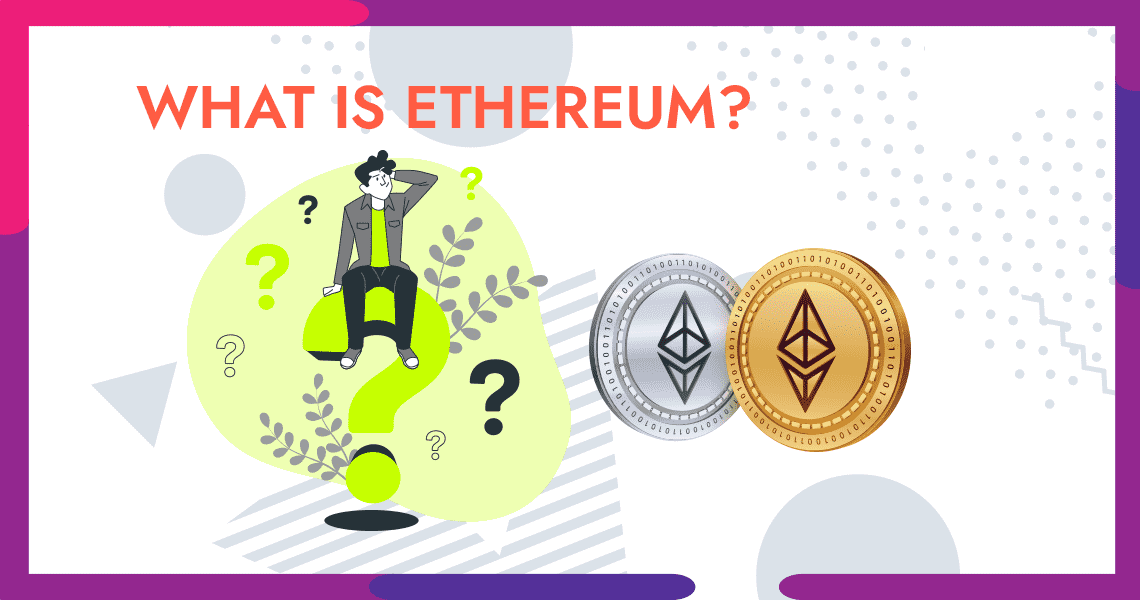
What Is Ethereum? Understanding Its Functionality
Ethereum stands as a decentralized global software platform fueled by blockchain technology at its core. Its primary asset, ether (ETH), serves as its native cryptocurrency.
Accessible to all, Ethereum allows the creation of secure digital technologies. While it features a token for blockchain support, users can also utilize it for purchasing goods and services where applicable.
Engineered to prioritize scalability, programmability, security, and decentralization, Ethereum serves as the preferred blockchain for developers and businesses seeking to revolutionize various industries and everyday activities.
Integral to Ethereum are smart contracts, essential components powering decentralized applications. These smart contracts, alongside blockchain technology, are utilized in numerous decentralized finance (DeFi) and other applications.
Explore Ethereum, its ETH token, and their significant roles in non-fungible tokens, decentralized finance, decentralized autonomous organizations, and the metaverse.
How Ethereum Operates:
Ethereum, conceived by Vitalik Buterin and introduced in a 2014 white paper, was officially launched in 2015 by Buterin and Joe Lubin, the founder of ConsenSys, a blockchain software company.
The creators of Ethereum were among the pioneers in recognizing blockchain technology's broader potential beyond merely serving as a secure virtual payment method.
Since Ethereum's inception, its native cryptocurrency, ether, has surged to become the second-largest cryptocurrency by market value, trailing only Bitcoin.
Blockchain Technology:
Ethereum and other Ethereum based products, like all cryptocurrencies, utilize blockchain technology. Visualize a lengthy chain of blocks, each containing data from the previous block, continuously updated across the network. This ensures that every participant possesses an identical copy of the blockchain.
The integrity of this distributed ledger is upheld by a network of automated programs that collectively validate transaction data. Changes to the blockchain are impossible without consensus being reached, ensuring its robust security.
Consensus is achieved through a consensus mechanism, with Ethereum employing the proof-of-stake algorithm. In this model, a network of validators collaborates to create and verify new blocks, each containing essential blockchain data such as transaction details and attestations confirming block validity.Wallets:
Ethereum holders utilize wallets to safeguard their ether. A wallet functions as a digital interface granting access to ether stored on the blockchain. Each wallet possesses an address, akin to an email address, serving as the destination for ether transactions, much like sending an email.
It's crucial to understand that ether isn't physically stored within the wallet. Instead, the wallet houses private keys, akin to passwords, essential for transaction initiation. Each ether unit owned corresponds to a unique private key, emphasizing the importance of securing keys through various storage methods.
Historical Split:
A significant milestone in Ethereum's journey is the hard fork, or split, resulting in the emergence of Ethereum and Ethereum Classic. In 2016, a faction of network participants seized control of the Ethereum blockchain, orchestrating the theft of over $50 million worth of ether designated for The DAO project.
The success of the exploit was facilitated by the involvement of a third-party developer in the new project. Following the incident, the majority of the Ethereum community advocated for reversing the theft by nullifying the existing Ethereum blockchain and endorsing an altered blockchain history.
Conversely, a minority faction opted to maintain the original Ethereum blockchain. This unaltered version of Ethereum subsequently evolved into the cryptocurrency known as Ethereum Classic (ETC).
The Future of Ethereum:
Ethereum's evolution towards the proof-of-stake protocol, facilitating transaction validation and ETH generation based on ether holdings, marks a significant upgrade for the platform. Initially known as Eth2, this upgrade now simply goes by the name Ethereum. However, Ethereum now comprises two layers: the execution layer, where transactions and validations occur, and the consensus layer, responsible for maintaining attestations and the consensus chain.
This upgrade has bolstered Ethereum's network capacity, addressing long-standing issues of chronic network congestion that have led to increased gas fees.
To tackle scalability concerns, Ethereum is actively developing "sharding." Sharding involves partitioning the Ethereum database across its network, akin to cloud computing, where numerous computers share the workload to reduce computational time. These segmented database sections, known as shards, will be managed by stakers of ETH. Sharding will enable more validators to operate simultaneously, diminishing the time required to achieve consensus through sharding consensus.







